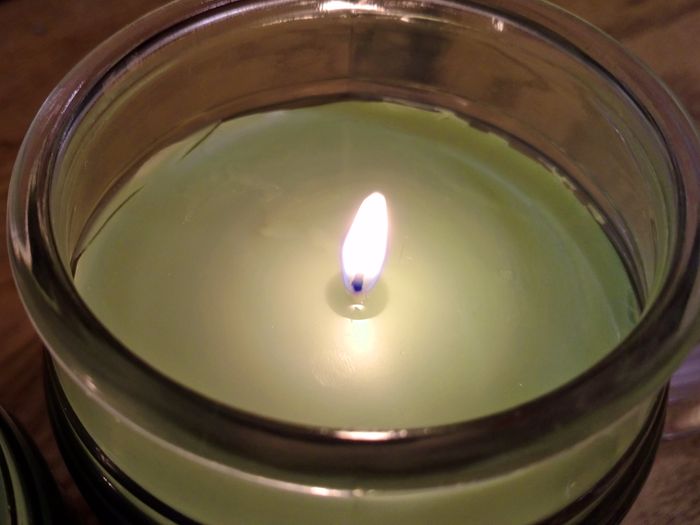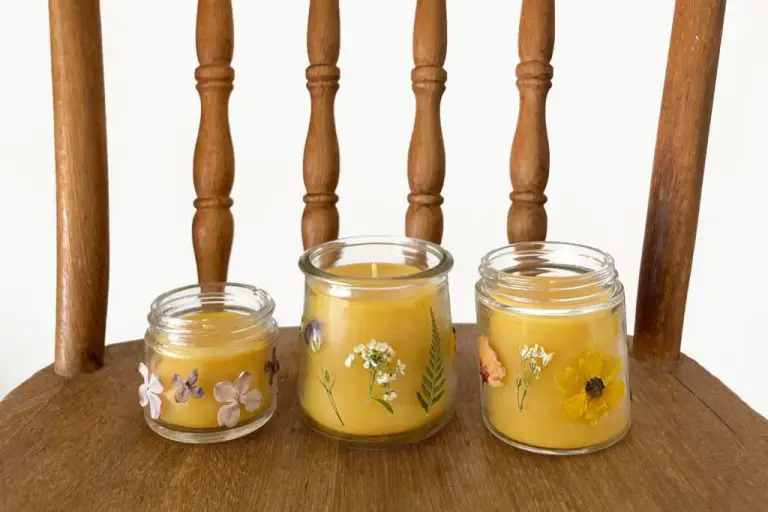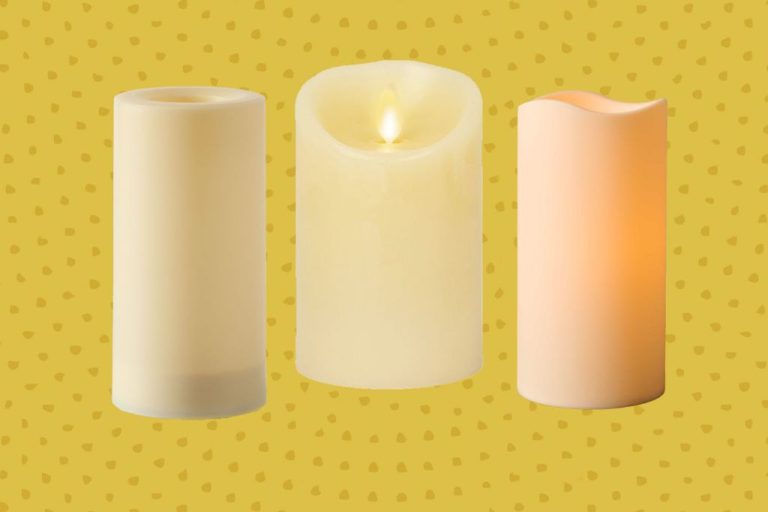Should You Only Buy Soy Candles?
Soy candles have become increasingly popular in recent years as a natural and eco-friendly alternative to traditional paraffin wax candles. The global scented candle market size was estimated at $556 million in 2022 and is expected to grow to over $1 billion by 2030, with soy candles making up a significant portion of that market (1). Soy wax is made from soybean oil and offers several advantages over paraffin wax which is a byproduct of petroleum refining.
The main appeal of soy candles is that they are made from a renewable and sustainable resource. Soybeans are a rapidly renewable crop grown primarily in the United States and South America. Soy wax is biodegradable and emits less soot and smoke when burning compared to paraffin wax. It’s estimated that the soy wax market will reach over $10 billion by 2031 as consumers continue to seek out natural products (3).
Soy candles also have a lower melting point than paraffin wax. This allows for better scent throw as the wax pools and disperses fragrance oils more efficiently. The natural texture of soy wax allows candle makers to create detailed designs not possible with paraffin. As a result, soy candle brands position themselves as premium, artisanal products. With demand for clean-burning soy candles on the rise, manufacturers must balance producing an eco-friendly product with meeting increasing market size and consumer demand (2).
Pros of Soy Candles
One of the main benefits of soy candles is that they are made from a renewable resource. Soybeans are a sustainable crop that can be grown quickly and efficiently to keep up with demand (source). This makes soy wax an environmentally-friendly alternative to paraffin wax, which is made from petroleum.
Soy wax itself is also natural and non-toxic. It does not contain any dyes, carcinogens or toxins like paraffin candles often do. Soy candles burn clean, without producing smoke or soot like paraffin candles (source). This makes them safer to burn indoors around pets and children.
The clean burn of natural soy wax also helps soy candles burn longer than paraffin. With no petroleum byproducts or soot to clog the wick, soy candles can provide up to 50% longer burn times.
Cons of Soy Candles
While soy candles have become popular for their natural and eco-friendly properties, they do come with some downsides compared to paraffin candles:
Soy candles tend to be more expensive than paraffin candles. The soy wax itself costs more, and specialized wicks and fragrances are often needed for optimal performance (The Pros and Cons of Soy Wax for Candles).
Soy wax can cause sooting issues if not properly formulated. The natural wax does not melt and burn as cleanly as paraffin, potentially leading to black smoke stains on walls and furniture (The Pros and Cons of Soy Wax Candles: What You Need to Know).
The lower melting point of soy wax means soy candles tend to have shorter burn times compared to paraffin. Frequent trimming of the wick may be needed to prevent tunnelling. This can limit soy candles to smaller diameters to ensure an even burn (Healthy candles- Why not soy, palm or paraffin candles?).
Pros of Paraffin Candles
Paraffin candles tend to be less expensive than soy candles. The paraffin wax itself costs less to produce, and it is more plentiful as a byproduct of oil refining. This makes paraffin candles more budget-friendly, with a wider range of affordable options.
Paraffin candles also come in a broader variety of fragrances compared to soy candles. The paraffin wax offers less fragrance interference, allowing candle makers to infuse more complex and nuanced scents. There are thousands of fragrance combinations available in paraffin.
Additionally, paraffin wax has a longer burn time than soy wax. The paraffin remains solid and rigid as it burns, while soy wax gets softer and pools. This longer burn time means you don’t have to replace paraffin candles as frequently.
Cons of Paraffin Candles
Paraffin wax candles have some notable downsides to consider:
Paraffin wax is made from petroleum, a non-renewable resource. The extraction and refining process to create paraffin wax requires energy and creates emissions. Some argue this makes paraffin candles less environmentally friendly than natural plant-based waxes like soy, coconut, or beeswax (Source).
When burned, paraffin candles release more soot and smoke compared to natural wax candles. The soot released can stain walls and surfaces. Some studies have found chemicals like toluene and benzene in the smoke emitted from paraffin candles (Source). Both are known carcinogens. However, more research is needed on the long-term health impacts of paraffin candle emissions.
Paraffin wax is also not biodegradable. This makes cleaning up spilled wax or disposing of used paraffin candles more difficult than with natural waxes. The wax can clog drains and take decades to break down.
Other Natural Wax Options
In addition to soy wax, there are other natural wax options to consider for candle making:
Beeswax – Beeswax is a natural wax produced by honey bees. It has a pleasant natural honey aroma and burns longer than paraffin wax. However, beeswax candles can be expensive and have a lower melting point than soy wax (source).
Palm Wax – Palm wax comes from the fruit of palm trees and is a sustainable, natural alternative to paraffin wax. It is odorless and blends well with other waxes. However, harvesting practices must be environmentally responsible (source).
Coconut Wax – Coconut wax is made from the oils of coconut meat. It has excellent scent throw and burns cleaner than other waxes. However, it can be more brittle than paraffin or soy wax (source).
When choosing a natural wax, consider factors like scent throw, melting point, cost, and environmental sustainability.
How to Choose the Right Candle
When selecting a candle, there are a few key factors to consider:
Budget – Soy and beeswax candles tend to be more expensive than paraffin. However, they also burn longer. Consider the cost per hour of burn time rather than just the sticker price.
Environmental impact – Soy, coconut, and beeswax are more environmentally-friendly options than paraffin made from petroleum. However, some soy wax does contain paraffin. Look for 100% soy or beeswax if this is important to you. 1
Scent needs – Beeswax and soy wax hold scent better than paraffin. Certain fragrances pair better with certain waxes. Ask the manufacturer for recommendations if you have a specific scent in mind.
Burn time – Paraffin often burns longer than soy or natural waxes. Burn time can vary widely between manufacturers. Check the product description for details.
Consider your priorities in terms of price, sustainability, scent, and burn time when selecting the right candle for your needs.
Caring for Your Candles
Proper care and maintenance are important for getting the most enjoyment and longevity out of your candles. Here are some tips for caring for your candles:
Trim the wick to 1⁄4 inch before each lighting to prevent excessive smoking and uneven burning. Use scissors or nail clippers designed specifically for trimming wicks. According to Real Simple, trimming the wick helps the candle burn evenly and prevents the black smoke that results from long wicks.

Allow the wax pool to form completely across the top before blowing out the flame. This helps prevent tunneling, where wax melts unevenly. Generally you want to allow the candle to burn for 4-6 hours the first few times to establish the wax pool.
Keep candles away from drafts, vents, ceiling fans, etc, which can cause the flame to smoke and become uneven. Find a draft-free spot before lighting.
Following these care tips will help your candles burn cleanly and evenly down to the bottom of the container.
Safety Considerations
When burning candles, it’s crucial to keep safety top of mind. According to the National Fire Protection Association (NFPA) https://www.nfpa.org/education-and-research/home-fire-safety/candles, you should always keep candles at least 12 inches away from anything that can burn, like curtains, upholstery, clothing, books, paper, flammable decorations or furniture. The NFPA also recommends keeping candles out of the reach of children and pets.
One of the most important candle safety tips is to never leave a burning candle unattended. According to the National Candle Association https://candles.org/fire-safety-candles/, you should always extinguish candles before leaving a room or going to sleep. Leaving a candle burning unattended can easily lead to accidental fires. It’s best to blow out candles when you can’t keep an eye on them.
By keeping candles a safe distance from flammable items and never leaving them burning unattended, you can help prevent dangerous home fires.
Conclusion
There are pros and cons to each candle wax type. Soy candles burn clean and are environmentally friendly, but can be more expensive and prone to frosting. Paraffin candles are affordable and have excellent scent throw, but produce more soot. There are also natural wax options like beeswax and coconut that have their own advantages.
When choosing a candle, consider your budget, scent preferences, and environmental impact. Soy and natural wax candles are great eco-friendly options. Paraffin works well if you want an inexpensive, strong-scented candle. For the best burn, look for candles with smooth, even wax pooling and crisp wicks.
Properly trim wicks before lighting and keep wicks centered while burning to prevent tunneling. Allow candles to burn for at least 1-2 hours and keep them away from drafts. Adhere to standard fire safety practices like keeping candles on stable, nonflammable surfaces. With some basic care, you can enjoy clean, long-lasting burns from any candle type.





